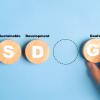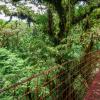
A new study reveals a widespread oversight in forest carbon dynamics measurement and modeling. Most forest carbon models and measurements neglect the carbon flux associated with the turnover of branch biomass, leading to inaccuracies in forest carbon accounting. The study, titled "Overlooked branch turnover creates a widespread bias in forest carbon accounting", was led by Hyungwoo Lim, conducted during his time as a Guest Researcher, in collaboration with his supervisor and co-author, Oskar Franklin, in the AFE group at IIASA.
Researchers often overlook branch turnover in measurements and models in forest carbon studies despite its significance in the forest carbon cycle. It increases the estimated aboveground wood production by 16%, equivalent to 1.9 Pg C y⁻¹ globally. This amount is comparable to the entire observed global forest carbon sinks.
Reallocating carbon to account for branch turnover in model simulations showed a reduction in stem wood biomass, a long-lasting carbon storage, by 7–17%, suggesting widespread biases in previous carbon accounting models.
Current methods, for example, using branch litterfall to estimate turnover, underestimate the carbon loss by 38% in a pine forest, as they overlook carbon from attached dead branches.
Significance Statement
Net primary forest production, a critical component of land carbon flux, is typically calculated by combining the increase in live biomass over time (net growth) with biomass turnover (producing new biomass to replace losses from tree mortality).
This research synthesizing field data from various global biomes highlights the importance of incorporating branch turnover into advanced models. The oversight leads to significant biases in carbon flux estimates across global datasets and model simulations. Modifications to field measurement protocols and model simulations are necessary to correct these systematic biases and improve the accuracy of projections regarding land carbon dynamics.
News

17 October 2024
How can policymakers and scientists help speed up progress to achieve the SDGs?

24 September 2024
RAINFOREST Project Workshop

22 August 2024
